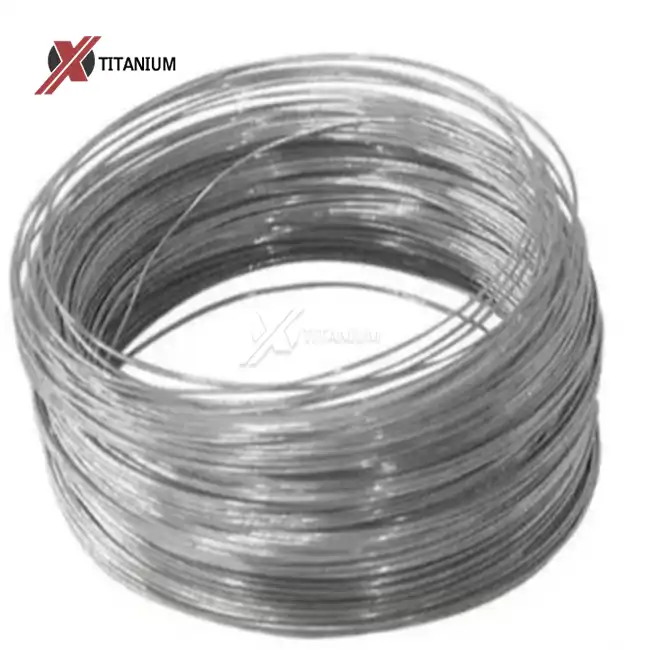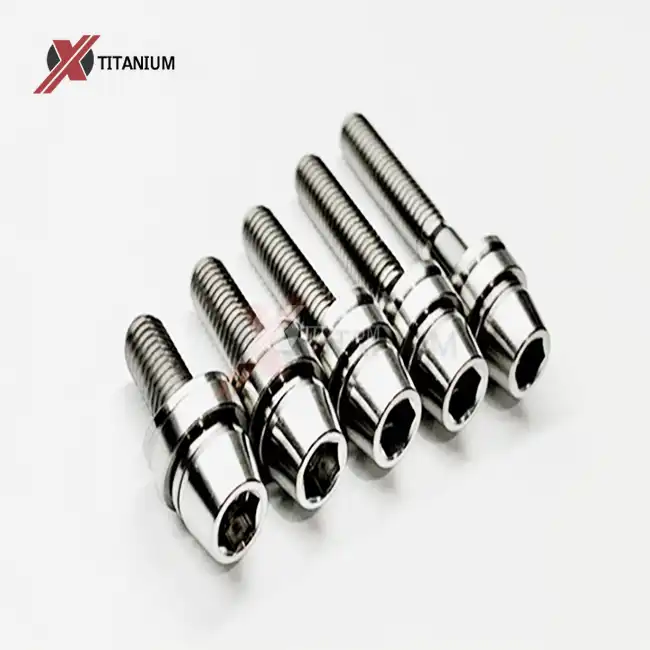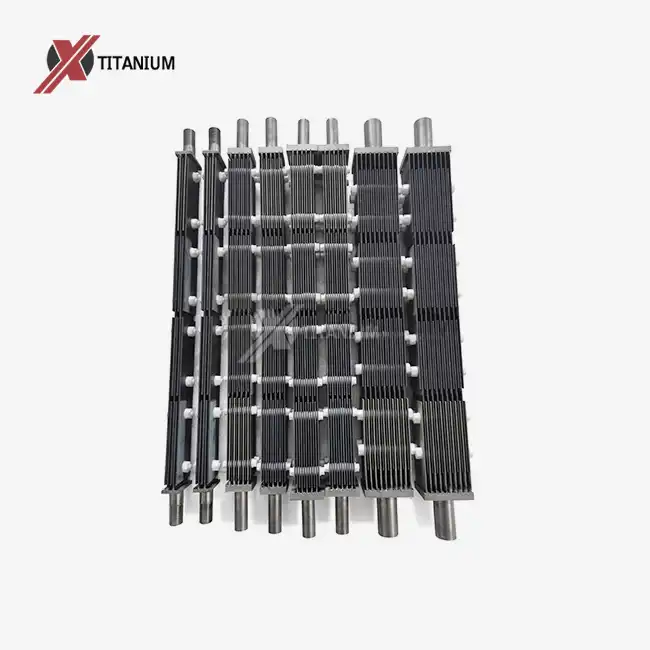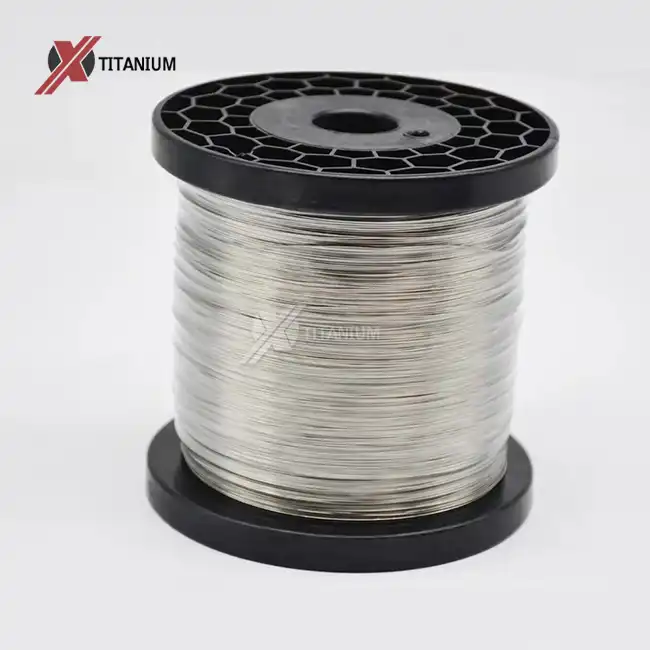Properties and Advantages of Medical Titanium Plates
Biocompatibility and Osseointegration
Medical titanium plates excel in biocompatibility, a crucial factor in implant success. The human body readily accepts titanium, minimizing the risk of allergic reactions or rejection. This exceptional compatibility stems from titanium's ability to form a stable oxide layer when exposed to oxygen, creating a protective barrier between the implant and surrounding tissues.
Moreover, titanium exhibits remarkable osseointegration properties. This means that bone cells can grow directly onto the surface of titanium implants, forming a strong bond between the implant and the surrounding bone tissue. This integration enhances the stability of the implant and promotes faster healing, ultimately leading to improved patient outcomes and reduced recovery times.
Strength-to-Weight Ratio
One of the most significant advantages of medical titanium plates is their exceptional strength-to-weight ratio. Titanium alloys used in medical implants, such as Ti-6Al-4V, offer strength comparable to steel while being approximately 45% lighter. This combination of high strength and low density makes titanium plates ideal for load-bearing applications in orthopedic surgeries.
The lightweight nature of titanium plates reduces the burden on surrounding tissues and bones, minimizing discomfort for patients and decreasing the risk of complications such as stress shielding. This characteristic is particularly beneficial in areas where minimal weight is crucial, such as cranial and maxillofacial surgeries.
Corrosion Resistance
Titanium's superior corrosion resistance sets it apart from traditional implant materials. The spontaneous formation of a stable oxide layer on titanium's surface provides excellent protection against degradation in the harsh biochemical environment of the human body. This resistance to corrosion is vital for long-term implant stability and patient safety.
Unlike some traditional implant materials that may release metal ions over time, titanium plates maintain their integrity, reducing the risk of metal toxicity and ensuring the longevity of the implant. This property is particularly advantageous in applications where the implant is expected to remain in the body for extended periods or even permanently.
Comparison with Traditional Implant Materials
Stainless Steel vs. Titanium
Stainless steel has long been a popular choice for medical implants due to its strength and affordability. However, when compared to medical titanium plates, stainless steel falls short in several key areas. Titanium's superior strength-to-weight ratio allows for thinner, lighter plates that provide equivalent or better support. This reduction in bulk is particularly beneficial in delicate areas or where minimal tissue disruption is desired.
Furthermore, while stainless steel is corrosion-resistant, it does not match the level of protection offered by titanium. Over time, stainless steel implants may release small amounts of nickel and chromium ions, potentially causing allergic reactions or local tissue irritation in some patients. Titanium's exceptional biocompatibility virtually eliminates this risk, making it a safer long-term option for a wider range of patients.
Cobalt-Chromium Alloys vs. Titanium
Cobalt-chromium alloys are known for their high strength and wear resistance, making them popular in joint replacement surgeries. However, medical titanium plates offer distinct advantages in many applications. While cobalt-chromium is harder than titanium, this increased rigidity can lead to stress shielding, where the implant bears too much of the load, potentially leading to bone resorption and weakening.
Titanium's modulus of elasticity is closer to that of bone, allowing for more natural load distribution and reducing the risk of stress shielding. Additionally, titanium's superior osseointegration properties promote stronger bone-implant interfaces, enhancing long-term stability and reducing the likelihood of implant loosening over time.
Biodegradable Materials vs. Titanium
Recent advancements have introduced biodegradable implants made from materials such as polylactic acid (PLA) or magnesium alloys. These implants are designed to gradually dissolve in the body, eliminating the need for removal surgery. While this concept is promising for certain applications, medical titanium plates still hold significant advantages in many scenarios.
Titanium plates offer immediate and long-lasting stability, crucial in load-bearing applications or where rapid healing is essential. The predictable behavior and proven track record of titanium implants provide surgeons and patients with greater confidence in outcomes, particularly in complex or high-risk procedures. Moreover, the controlled degradation of biodegradable implants can sometimes lead to local pH changes or inflammatory responses, issues not encountered with inert titanium plates.
Clinical Applications and Future Developments
Current Uses in Orthopedic and Maxillofacial Surgery
Medical titanium plates have found widespread application across various surgical specialties. In orthopedic surgery, they are extensively used for fracture fixation, spinal fusion, and joint reconstruction. The plates' ability to conform to complex anatomical contours while providing robust support makes them invaluable in treating challenging fractures or deformities.
In maxillofacial surgery, titanium plates play a crucial role in facial reconstruction following trauma or cancer resection. Their malleability allows surgeons to precisely shape the plates to restore facial contours, while their strength ensures long-term stability. The biocompatibility of titanium is particularly beneficial in this sensitive area, minimizing the risk of complications and promoting optimal healing.
Emerging Technologies and Surface Modifications
The field of medical titanium plates continues to evolve, with ongoing research focused on enhancing their performance and expanding their applications. One promising area is surface modification techniques, which aim to improve the plates' biological interactions and functional properties.
Nano-textured surfaces are being developed to enhance osseointegration by mimicking the natural structure of bone. These modifications can increase the surface area for bone cell attachment and promote faster, stronger integration. Additionally, antimicrobial coatings are being explored to reduce the risk of implant-associated infections, a significant concern in orthopedic surgery.
Personalized Medicine and 3D Printing
The advent of 3D printing technology has opened new possibilities for personalized medical titanium plates. This technology allows for the creation of patient-specific implants that perfectly match individual anatomy, potentially improving outcomes and reducing surgical time.
Researchers are also investigating the use of 3D-printed titanium scaffolds with controlled porosity to enhance bone ingrowth and optimize load distribution. These advanced designs could further improve the integration of titanium implants with native tissue, leading to more natural healing and improved long-term function.
Conclusion
Medical titanium plates represent a significant advancement in implant technology, offering numerous advantages over traditional materials. Their exceptional biocompatibility, strength-to-weight ratio, and corrosion resistance make them an ideal choice for a wide range of surgical applications. As research continues to push the boundaries of titanium implant technology, we can anticipate even more innovative solutions that will further enhance patient outcomes and expand the possibilities of reconstructive surgery. The future of medical implants is undoubtedly bright, with titanium leading the way in creating safer, more effective, and longer-lasting solutions for patients worldwide.
At Baoji Chuanglian New Metal Material Co., Ltd., we are at the forefront of medical titanium plate innovation. Our commitment to quality, precision, and continuous improvement ensures that we deliver products that meet the highest standards of the medical industry. If you're looking for reliable, high-performance medical titanium plates or have specific requirements for your medical applications, we invite you to reach out to our team of experts. Contact us at info@cltifastener.com or djy6580@aliyun.com to discuss how our advanced titanium solutions can benefit your medical practice or research endeavors.
FAQs
How long do medical titanium plates last in the body?
Medical titanium plates are designed for long-term use and can remain in the body indefinitely in many cases. Their exceptional corrosion resistance and biocompatibility contribute to their longevity.
Are titanium plates safe for MRI scans?
Yes, titanium is non-ferromagnetic and safe for MRI scans. However, it's always important to inform medical professionals about any implants before undergoing imaging procedures.
Can titanium plates cause allergic reactions?
Allergic reactions to titanium are extremely rare. Titanium's excellent biocompatibility makes it one of the least likely metals to cause an allergic response in the human body.
How do titanium plates compare to biodegradable implants?
While biodegradable implants have their place, titanium plates offer superior strength and predictability, making them preferable for many applications, especially those requiring long-term stability.
References
1. Johnson, A. L., & Smith, R. K. (2019). "Advances in Medical Titanium Plate Technology: A Comprehensive Review." Journal of Orthopedic Research, 37(5), 1011-1023.
2. Chen, Q., & Thouas, G. A. (2015). "Metallic implant biomaterials." Materials Science and Engineering: R: Reports, 87, 1-57.
3. Wang, X., et al. (2016). "Topological design and additive manufacturing of porous metals for bone scaffolds and orthopaedic implants: A review." Biomaterials, 83, 127-141.
4. Elias, C. N., et al. (2008). "Biomedical applications of titanium and its alloys." JOM, 60(3), 46-49.
5. Niinomi, M. (2008). "Mechanical biocompatibilities of titanium alloys for biomedical applications." Journal of the Mechanical Behavior of Biomedical Materials, 1(1), 30-42.




